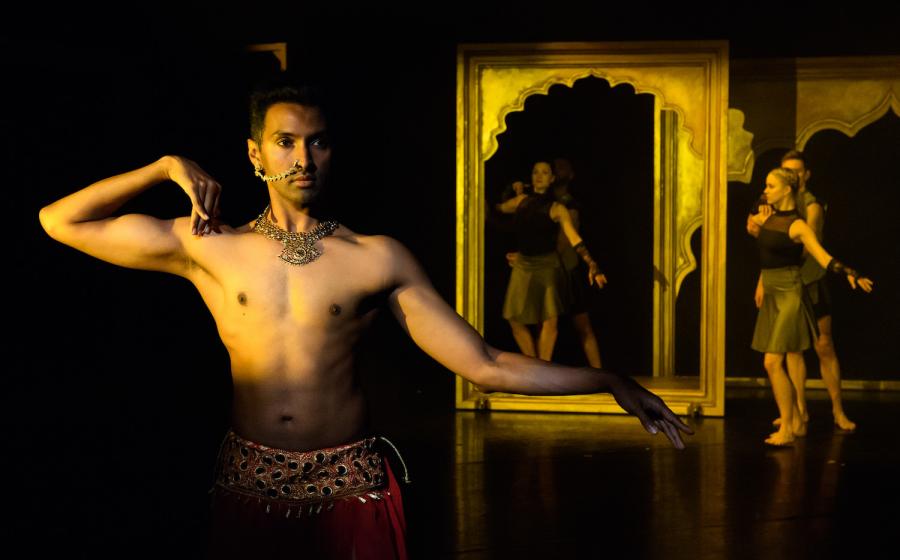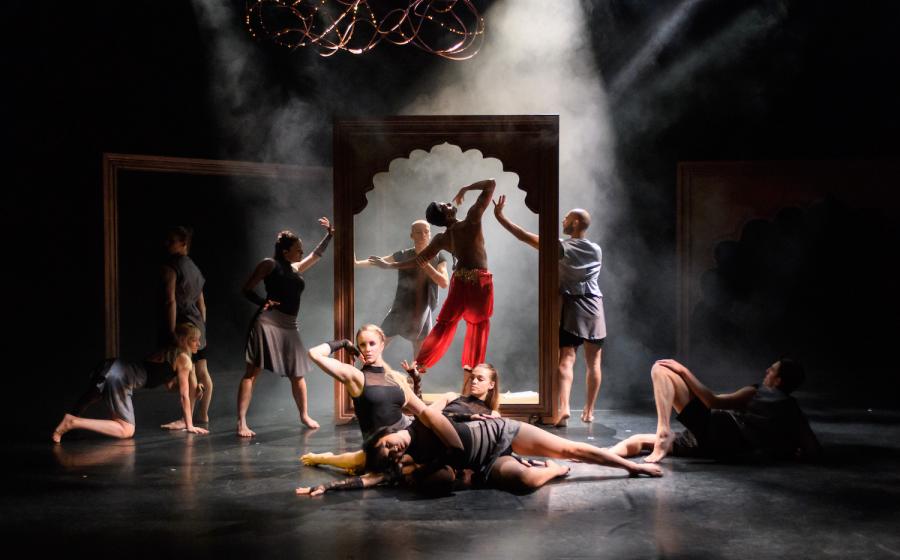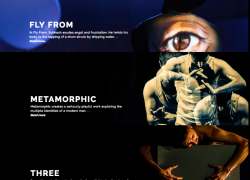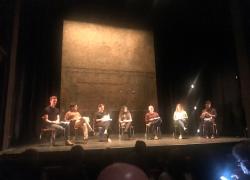Bayadère – The Ninth Life
Bayadère – The Ninth Life Shobana Jeyasingh Dance 16-17 October 2017 Sadler’s Wells Theatre – Reviewed by Lise Smith
It’s almost thirty years since Chennai-born Shobana Jeyasingh launched her company with the arresting abstract work Configurations. In the intervening three decades, Jeyasingh’s work has run the gamut of styles and themes: from the life of plants to the Indian sport of kabbadi; from food culture to musings on mortality and the existence of God. First presented at the Royal Opera House Linbury Studio in 2015, Bayadère – The Ninth Life is now enjoying a second outing in a new co-production with Sadler’s Wells.
Since 2015, Jeyasingh has reworked sections of the performance to bring clarity and definition to the three-act structure. The first section uses projected text messages to detail the amused fascination with which an on-stage actor (Adi Chugh) reacts to his friend’s description of Marius Petipa’s 1877 ballet La Bayadère. This great classic of the Russian repertory is loved by ballet fans for its melodramatic narrative, challenging choreography and the two strong female roles of princess Gamzatti and temple dancer Nikiya.
While the ballet is much loved, there’s no escaping the Orientalising and ‘othering’ impulses of the nineteenth century on this pantomime vision of India: all exotic temples, harem pants and a scuttling holy man – possibly a Shaiva shaman, possibly a creature of pure fantasy, but almost always nonsensically referred to in cast lists as a ‘fakir’. Petipa’s Bayadère is beautiful to watch but also discomfiting, and Chugh’s disbelieving responses to blackface in twenty-first-century performance and a ‘pure Bollywood’ storyline reflect Jeyasingh’s own mixed feelings towards the ballet.
Chugh’s unseen correspondent describes La Bayadère’s plot in meticulous detail, with company members popping into a little box on stage to perform short vignettes extracted from the ballet. These live vignettes are simultaneously projected in deliberately jerky, looping videos that look like animated gifs; both live and video snippets set up movement motifs that echo into the later sections of the performance, but in truth the repeated video projection of action seen live on stage moments earlier adds little to the experience and causes the pacing of the first section to drag.
The second act focuses on the arrival in nineteenth-century Paris of a group of ‘real bayadères’ from Tamil Nadu, and the forensic reports made by contemporary poet and dramatist Théophile Gaultier (narrated in a recorded voiceover) of the features and comportment of one temple dancer in particular. Gaultier’s observations are shocking today in their casual othering of the ‘alien’ bayadère Amany with her dusky skin, rolling eyes and unfortunate habit of trying to eat cherry-shaped glass hat decorations. As Gaultier’s thoughts are narrated, the reliably elegant Sooraj Subramaniam brings Amany’s sculptural poses and fluid gestures to life on stage, framed by a gilded box that looks like a cross between a cage and a museum cabinet. The devadasi is ogled and imitated, prodded and pulled about, regarded as a creature of savage fascination; then, with the swiftness of changing fashion, forgotten.
The work is at its strongest here in the second act, with Jeyasingh throwing a light on the casual abuses of the colonial gaze. In some respects, the middle section of Ninth Life is a companion piece to the recently-revised Material Men Redux, which gave names and voices to the nineteenth-century Indian slaves and subalterns who lacked either in their lifetimes. By (deliberate) contrast, Gaultier’s Amany never truly receives a voice of her own, viewed always through the prism of Orientalising attitudes and expectations, finally abandoned by admirers that in the end preferred the exotic fantasy ballet version to the real thing.
The third act remains almost completely abstract. There are new suggestions of a link to the second act: a rumbling mass of voices on the soundtrack and a quick rearrangement of the set suggests some kind of museum setting; Subramaniam’s past/present-day dancer character wanders briefly through the scene in person; and a video projection suggests a bayadère (possibly Amany, possibly the fictional Nikiya) penchéeing off to the netherworld in a dissolving dust of pixels. The links are slight and suggestive, however, and having become absorbed in the history and characters of the second act, the shift to abstract composition seems abrupt and unsettling. Capably composed as it is, the third act still feels like it belongs to a different production altogether, and as others around me in the auditorium noted on the night, the lack of Subramaniam in this section means that Ninth Life is missing a big part of its appeal in the final third.
Jeyasingh’s revisions have brought a degree of welcome clarity to this interesting and provocative work, which remains well-crafted and visually striking. The performers are uniformly excellent and the classical-contemporary movement material as thrillingly dynamic as ever. For me, the problem is in the balance: the production is at its strongest when it critiques and reflects on the complex political layers of Amany’s world and I would certainly like to spend much more time there.




















